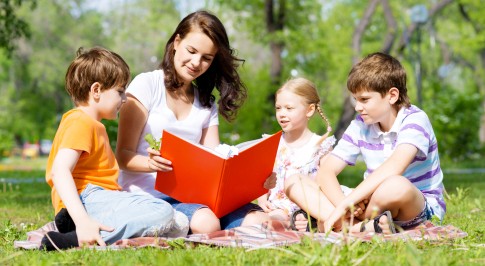“Science is when I use my experiment table” this was the response my three year old gave when I asked her, “what is science?” That experiment table is used for mixing paints, baking, building, popping balloons, doing float/sink tests in a basin and much more. It’s a well-loved wee table.
In Richard’s introductory lecture we had to come up with a small experiment in order to show ourselves how easily science can be implemented into the curriculum but mainly how fun it can be. For me, the science subjects in High School meant I was always sat at a dilapidated wooden bench that was covered in menchies. The teacher stood up front writing down endless equations, making us watch documentaries and we may have seen the occasional Bunsen burner or test tube. Way, way back in primary school (over 16 years ago) I can’t remember a “science” lesson… I remember getting to construct a bridge, make string telephones, study the life of a plant, cut up big plastic bottles to measure rainfall, a whole mesmerising project on mini-beasts and getting to be hands on at the Edinburgh Butterfly Farm. I can remember back even further, to playing with water and sand in nursery, as well as a “find out who is tallest” activity.
It just goes to show that science is all around us, we can choose to engage and ask questions of the world we live in and the universe around us. That, to me, is science. Children should be able to tactically, visually and cognitively approach queries they have. That work can be solo or in a group environment. The key is letting them figure it out… the mistakes can be half the fun.
For my TDT I decided to investigate forces, in relation to the experience and outcome SCN 2-07a in the Curriculum for Excellence; by investigating how friction, including air resistance, affects motion, I can suggest ways to improve efficiency in moving objects. I am not going to lie, the internet is a wondrous invention. After various “Fun children’s force experiment” Google searches I saw how to lift a bottle of rice with a chopstick. It looked simple, inexpensive and fun. Perfect. Then I started to read into the science, the how? How would I explain this to a room of children? What would they gain? The answers were simple.
The combined weight of the rice and bottle were less than the force of the friction when the chopstick was forced into the bottle of rice, thus making it “stick” and act as a handle to lift up the heavy bottle of rice. The answers only left me wanting to know more. I feel it would be beneficial next time to do a comparative experiment with either less rice or a different substance. To show that it is not just the weight but the friction. Friction force can only happen with solid objects, unlike air resistance and fluid force (viscosity). There is then the opportunity to develop on to discussing aero-dynamics, building there own cars etc. How is force measured though? How do you find out how much rice is enough? Does it have to be a wooden chopstick or would a screwdriver achieve the same? Could it work with different substances in the bottle? Our bodies have joints, why does the force of friction not erode them?
I stumbled upon the Co-efficient of Friction; how easily one object moves in relation to another. The higher the co-efficient of friction the less movement and the lower the co-efficient of friction the more movement. These are basics but they can open up onto a breadth of activities and lessons or tie into a number of projects: space, the human body, travel, properties of substances and even history if we spoke about the discovery of friction. A healthy balance and inquiry into a few of these areas should be explored.
If I have the opportunity to help a class get involved in this experiment the avenues of investigation to go down are so vast. Linking to the current interest in the UK based astronaut and the re-entry of the shuttle or even a topic as simple as travel and the need for aero-dynamics. However, I also feel able to delve into specific aspects of the science behind it with them. I made a huge mess, went through a lot of rice but it was all part of the interactive fun and communication. For younger children it is magic and it could then be revisited and developed later in their school careers. The varying complexities depends on the engagement and interest the children have and how I can spark that! I was considering a montage of people slipping on ice… the need for friction!

My SMART plan would be-
SPECIFIC- Create a fun experiment to open up the concept of force and develop current understanding
Measurable- Develop a lesson plan and cost of materials
Achievable- Use online resources, Curriculum for Excellence, peers, teacher on placement and gauge the children’s interest
Relevant- Links to sparking lifelong interest, creativity and inventiveness
Times- aim to utilise the placement time and then reflect on the lesson a week after completion of placement



